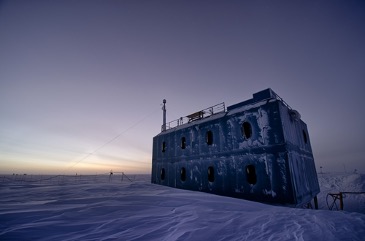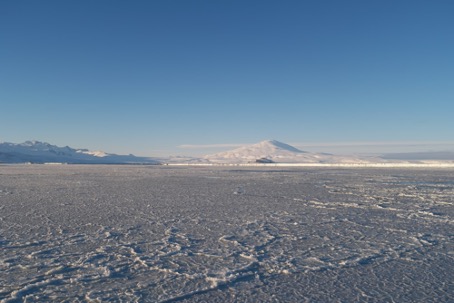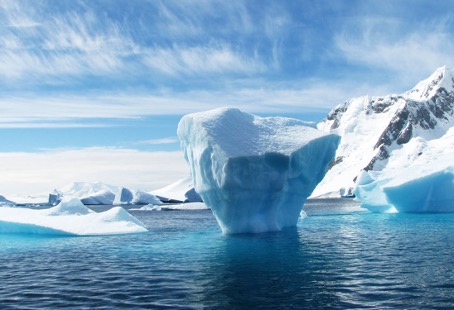Is Antarctica a Continent?
Keren Amattey and Damian K. F. Pang
Keren Amattey is a geographer from Ghana. She studied Political Science and Geography at the University of Ghana. She loves reading about the world’s issues and every other romance book she can find.
Often Omitted
Continents are the largest units we use when talking about the land area on our planet[i] but exactly defining what a continent is has proven very difficult (see What are continents?)[ii]. As a result, continents have been defined by convention rather than by clear physical or socio-cultural characteristics[iii]. Antarctica is home to only a few thousand scientist and support staff; most of them are only visiting during the summer months with only a skeleton crew remaining during the winter[iv]. People are vastly outnumbered by wildlife with around 20 million penguins living in the region[v]. Continents are frequently used to compare different areas in terms of populations, demographics, economic output, and more. Antarctica has fewer inhabitants than most small towns and cannot even compare to large cities, let alone countries or continents! Those staying on the icy continents visit for short periods before returning to their homes elsewhere. There is no native population and therefore, Antarctica has no intrinsic cultural or linguistic relevance either. For these reasons, Antarctica is often omitted when continents are analysed and some continent models do not assign it full continent status. However, many models—including the most-widely used 7-continent model[vi],[vii]—include Antarctica as a full continent despite the small, non-native population. There are many reasons for this choice.

Why Antarctica is considered a Continent
There are no universally agreed upon definitions of what a continent is. They do not give a clear representation of what continents really are. The original concept of continents (and also where its name comes from) was that of terra continens: continuous land[viii]. Most modern definitions build on that and describe continents as large, continuous, and discrete masses of land which are separated by expanses of water[ix]. Based on these criteria, Antarctica qualifies as a continent.
Large
Antarctica’s land area covers about 14.2 million sq km (5.5 million sq miles)[x] and its ice sheet swells up to over 19 million sq km (7.3 million sq miles) in winter[xi]. This makes it the fifth largest continent in the world, taking up about 20% of all land in the Southern hemisphere[xii]. It is larger than Europe and twice the size of Australia, which are both considered continents, and 1.5 times larger than the United States[xiii]. The continent is covered in thick ice that can grow to almost 5km (3 miles) in thickness[xiv]. Although Antarctica contains around 90% of the world’s ice, there is firm land beneath much of it, unlike the Arctic. Antarctica certainly qualifies as a large landmass.

Continuous
There are many islands around Antarctica and also within the Antarctic Convergence. The continental status of islands is still being debated. Most geologists consider islands that sit on the continental shelf as part of continents[xv]. Antarctica would qualify as a continent regardless of the status of its islands since the vast majority of land is connected, meeting the criteria for having a large and continuous landmass. One question that is unique to Antarctica is the status of ice shelfs. Although the landmass is largely continuous, most of it is covered by thick ice sheets. Most continental models do not clarify whether this impacts the continental status of the land beneath.
Discrete and Separated by Expanses of Water
South and North America are joined together by a narrow strip of land and Europe and Asia form a continuous landmass that is connected to Africa through the Sinai peninsula. This makes continental divisions between them difficult[xvi]. Antarctica is in no close proximity to another continent and does not have this problem. As the southernmost continent on Earth, the entire region is surrounded by the Southern Ocean—also known as the Antarctic Ocean[xvii]. In the 7-continent model, Antarctica and Australia are the only two that are completely separated from other continents by the ocean.

Other Criteria
The Collins dictionary defines a continent as a very large area of land that consists of several countries[xviii]. Antarctica does not have any countries and 54 states ratified the Antarctic Treaty recognizing no one owns the land with freedom given to everyone to conduct scientific research on it[xix]. As such, Antarctica does not qualify as a continent by this definition. However, this criterion is arbitrary and not widely accepted[xx].
Scientists have proposed other criteria for continents that seem more relevant. One of them is that the crust (the outermost geological layer) is continental rather than oceanic[xxi]. Others include having a high elevation relative to the oceanic crust and a broad range of geological features (including rock types and seismic velocity)[xxii]. Antarctica clearly qualifies as a continent qualifies based on these physical critera[xxiii].
Conclusion
Antarctica is a unique region that does not have any countries or a native population. Continents are not clearly defined, which makes it difficult to determine where to place the southernmost landmass on our planet. The human footprint is so small, that Antarctica is simply not in the same category as other continents in terms of population, economic output, culture, or political entities. At the same time, Antarctica has all the main physical features associated with continents. That is why most models (including the most widely used ones) include it as a separate continent.
[i] Lewis, M. W., & Wigen, K. E. (1997). The myth of continents: A critique of metageography. Berkeley, CA: University of California Press. P. 1
[ii] Pang, D. K. F. (2021). What are continents? Sirius Geography. URL: tba
[iii] Pang, D. K. F. (2021). What are continents? Sirius Geography. URL: tba
[iv] Central Intelligence Agency. (2021). Antarctica. World Fact Book. URL: https://www.cia.gov/the-world-factbook/countries/antarctica/
[v] BAS. (2015). Penguins. British Antarctic Survey. URL: ttps://www.bas.ac.uk/about/antarctica/wildlife/penguins/
[vi] Central Intelligence Agency. (2015). The World Facebook 2016-2017. Washington, DC: U.S. Government Printing Office.
[vii] World Atlas. (n.d.) Continents of the world. World Atlas. URL: https://www.worldatlas.com/continents
[viii] Oxford English Dictionary. (1989) .Continent n. Oxford English Dictionary, 2nd edition. Oxford, UK: Oxford University Press.
[ix] Lewis, M. W., & Wigen, K. E. (1997). The myth of continents: A critique of metageography. Berkeley, CA: University of California Press. P. 1
[x] Central Intelligence Agency. (2021). Antarctica. World Fact Book. URL: https://www.cia.gov/the-world-factbook/countries/antarctica/
[xi] National Geographic Society. (2012). Antarctica. National Geographic. URL:https://www.nationalgeographic.org/encyclopedia/antarctica/
[xii] National Geographic Society (2012). Antarctica. National Geographic. URL:https://www.nationalgeographic.org/encyclopedia/antarctica/
[xiii] Central Intelligence Agency. (2021). Antarctica. World Fact Book. URL: https://www.cia.gov/the-world-factbook/countries/antarctica/
[xiv] NASA https://www.nasa.gov/mission_pages/icebridge/multimedia/fall11/antarctica-US.html
[xv] National Geographic Society. (2011). Continental shelf. National Geographic. URL: https://www.nationalgeographic.org/encyclopedia/continental-shelf/
[xvi] Pang, D. K. F. (2021). What are continents? Sirius Geography. URL: tba
[xvii] National Ocean Service. (2021). How many oceans are there? NOAA. URL: https://oceanservice.noaa.gov/facts/howmanyoceans.html
[xviii] Harper Collins. (2018). Continent. In Collins COBUILD Advanced Dictionary [9th ed.]. New York, NY: Harper Collins.
[xix] The Secretariat of the Antarctic Treaty. (n.d.) The Antarctic Treaty. URL: https://www.ats.aq/
[xx] Pang, D. K. F. (2021). What are continents? Sirius Geography. URL: tba
[xxi] National Geographic Society. (2015). Crust. National Geographic. URL: https://www.nationalgeographic.org/encyclopedia/crust/
[xxii] Mortimer, N., et al. (2017). Earth’s Hidden Continent. GSA Today, 27(3), 27-35. . https://doi.org/10.1130/GSATG321A.1
[xxiii] Mortimer, N., et al. (2017). Earth’s Hidden Continent. GSA Today, 27(3), 27-35. . https://doi.org/10.1130/GSATG321A.1